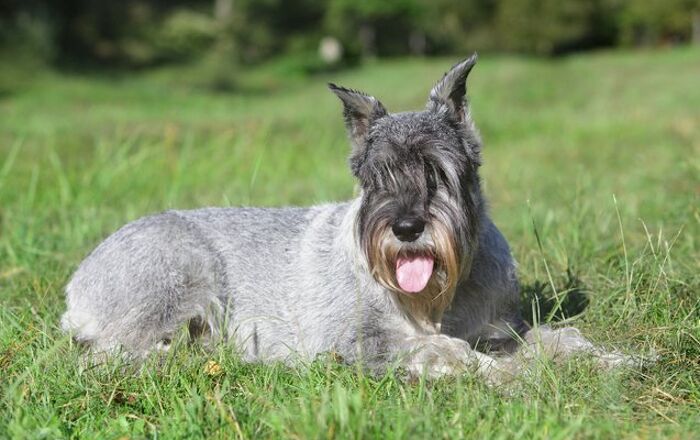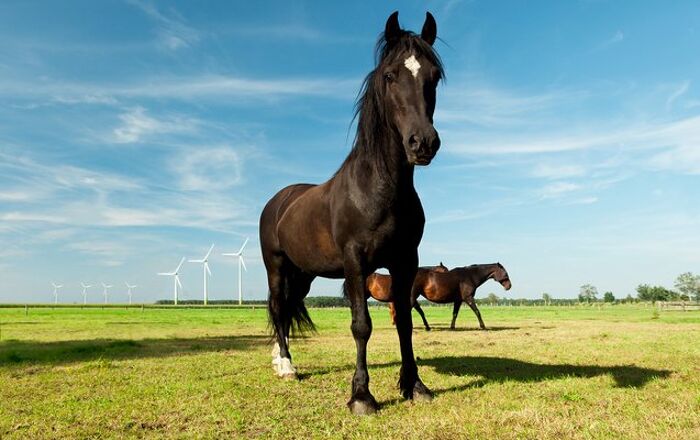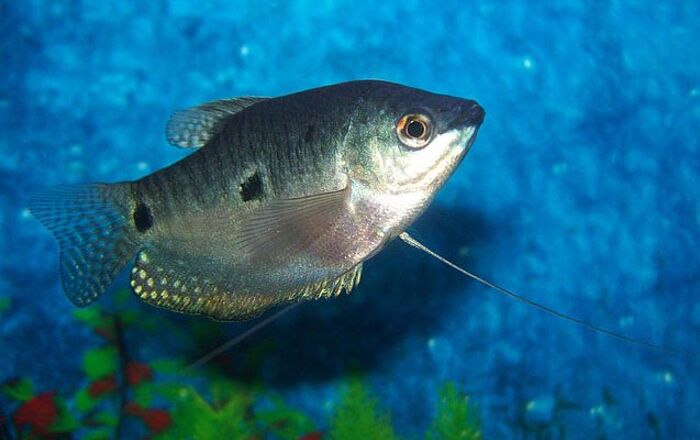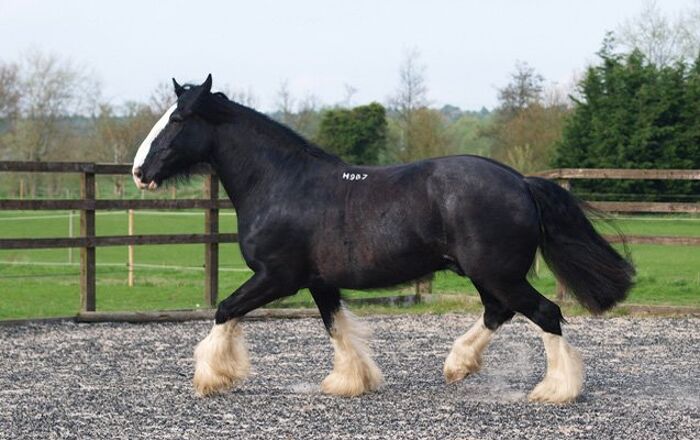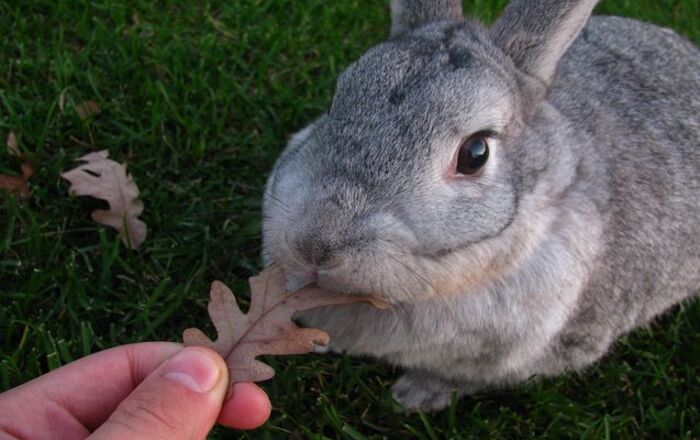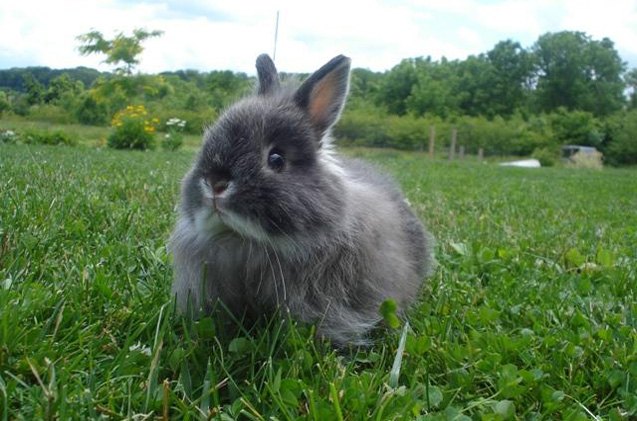
Jersey Wooly Rabbit Breed History/Origin
The Jersey Wooly rabbit was first introduced to the American Rabbit Breeders Association (ARBA) in 1984 by rabbit breeder Bonnie Seeley of High Bridge, New Jersey. This breed was developed by crossing the French Angora rabbit with a Netherland Dwarf rabbit and the result was a small bunny with a wooly coat. This breed was recognized by the ARBA four years later in 1988 as the Jersey Wooly rabbit and is now one of the most widely-exhibited rabbits at shows in the United States, as well as a favorite pet.
Jersey Woolys are also known as the “No-Kick Bunny” because they are gentle, docile, and even-tempered.
Overall Description
The Jersey Wooly rabbit has a compact body size and weighs between 1-3 lbs, making it a dwarf breed. They have small, erect ears that stand about 2-3 inches long. They have a square, bold head, which is why this breed is affectionately known as the “Mug Head.”
Coat
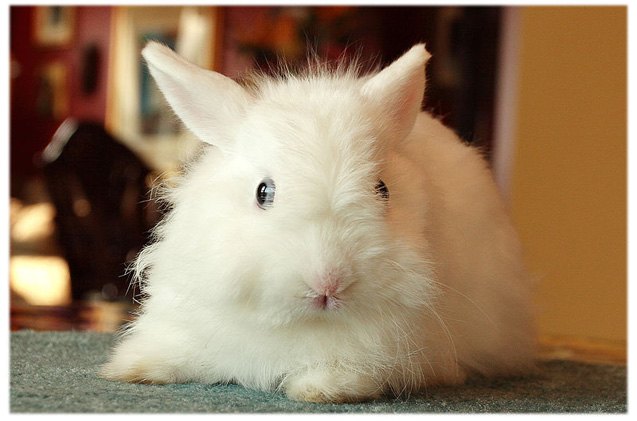
In order to keep the Jersey Wooly’s coat clean and tangle-free, owners need to brush their rabbit’s coat at least once a week during non-shedding seasons. Adult rabbits will need to be brushed a little more often once spring hits, as this time of year is commonly known as “shedding season.” Unlike other breeds of rabbits (like Angoras, for instance), the Jersey Wooly rabbit does not require any trimming or clipping to maintain their wool. Should your rabbit’s coat get dirty, simply spot clean it with a damp cloth, as rabbits should never be given a full ear-to-tail bath (this causes them great stress and can cause cardiac problems).
Colors
This rabbit breed is recognized by the ARBA in six different color groups. The Agouti group features chestnut, chinchilla, opal and squirrel colors; the Broken group features any recognized variety in conjunction with white; and the Self group consist of black, blue, chocolate, lilac, BEW (blue-eyed-white), and REW (red-eyed-white). The Shaded group features tortoise shell, blue tortoise shell, sable point, seal, Siamese sable and smoke pearl; the Tan Pattern group consists of black otter, blue otter, smoke pearl marten, sable marten, black silver marten, blue silver marten, chocolate silver marten, and lilac silver marten; and finally, the AOV (any other variety) group features pointed white black and pointed white blue variety.
Because of their sweet nature, the Jersey Wooly makes a wonderful pet for most lifestyles.
Care Requirements
Due to its small size, this should be an indoor rabbit. The enclosure should be large enough to allow the Jersey Wooly rabbit to comfortably stretch it its cage (which shouldn’t be very difficult since it’s so small). The enclosure should be made of wire and have a plastic bottom which should be covered with bedding. The bedding should be spot-cleaned every day to clear it of debris and should be completely replaced every week.
A Jersey Wool’s diet is like any other rabbit’s diet and should be made up of 70 percent good-quality hay (such as timothy hay). The rest of its diet should be a healthy balance of pellets, leafy greens, vegetables and fruits. Be sure to do your research and find out which foods are safe and which ones aren’t for your rabbit, as particular fruits and vegetables or parts of some fruits and vegetables (such as apple and pear seeds) are poisonous to bunnies.
In order for a rabbit’s personality to flourish, they need plenty of outdoor enclosure time to interact with their human handlers. This means letting your rabbit have plenty of time to hop about in a bunny-safe room (make sure there are no exposed electrical wires that can harm them) or setting them out in your fenced yard. Always be vigilant for predators (such as racoons) when your rabbit is outdoors, as they can cause serious harm to a rabbit this small.
Health
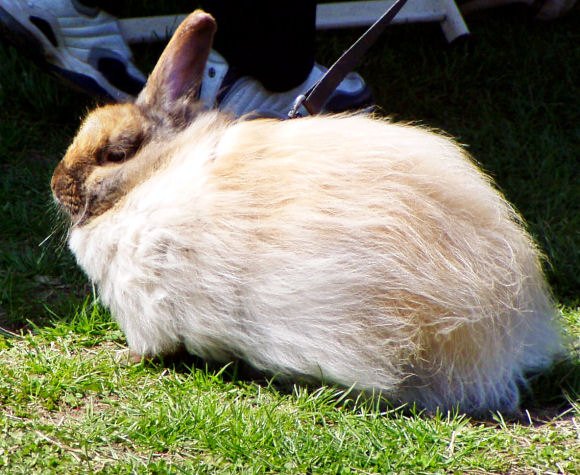
A Jersey Wooly rabbit is not as susceptible to wool block as other rabbits (English Angoras, for instance), but because of their long wool, they are still at-risk. Like cats, rabbits are clean creatures and regularly groom themselves by licking their fur. However, cats can regurgitate the wool they invest while rabbits do not have that ability. Consequently, the wool they invest builds up inside their stomachs and makes them feel full and as a result, they starve to death. Symptoms include a lack of appetite, decreased amount of droppings and less mobility in general. If you suspect your Jersey Wooly rabbit has wool block, contact your local vet immediately.
Rabbits should also be de-wormed twice a year. This can be done by squeezing a pea-sized amount of de-worming paste and allowing your rabbit to eat it – this should protect them for six months. Also be sure to routinely check a rabbit’s mouth for ingrown teeth which can grow into their jaws and faces and be very painful, and check they ears for signs and symptoms of ear mites.
Some rabbit breeders believe that spaying/neutering your rabbit increases their life span by a few years. Does can be spayed as young as four months old while bucks can be spayed when they are as young as three and a half months of age.
The Jersey Wooly’s square, bold head has earned it the nickname “Mug Head.”
Temperament/Behavior
Jersey Woolys are also known as the “No-Kick Bunny,” which means exactly what it sounds like: they are gentle, docile and not known to bite or kick their handlers due to their even tempers. Because of this, they make wonderful family pets for pet parents who have children of any age. Of course, young children should always be supervised when handling a rabbit, especially one of such a small size, but overall, they should be quiet and affectionate towards their handlers. Because of their sweet nature, they also make wonderful rabbits for first-time pet parents, seniors/retirees, couples and even singles who would like a cuddly companion to pass the time.
Rabbits are harder to potty train than other animals such as dogs, birds and cats. Rabbits usually have a “potty corner” in their enclosure where they usually like to do the deed. If you place a litter box in that particular corner, they will generally make the connection and slowly but surely understand that is where they are supposed to do their business. Some rabbit parents have found success by placing many litter boxes around their homes so their rabbits don’t have to go to the other side of their house in order to find the right place to do the deed.
These little bunnies would benefit from having a few rabbit-safe toys at their disposal. This can be as simple as an empty roll of toilet paper or a rabbit-safe wood block to as elaborate as mentally stimulating toys purchased at your local pet store. They love lots of time with their human handlers and enjoy being picked up and petted as often as you’d like.
Photo credit: feathersgalore/backyard chickens; Diane Hamilton/Flickr



